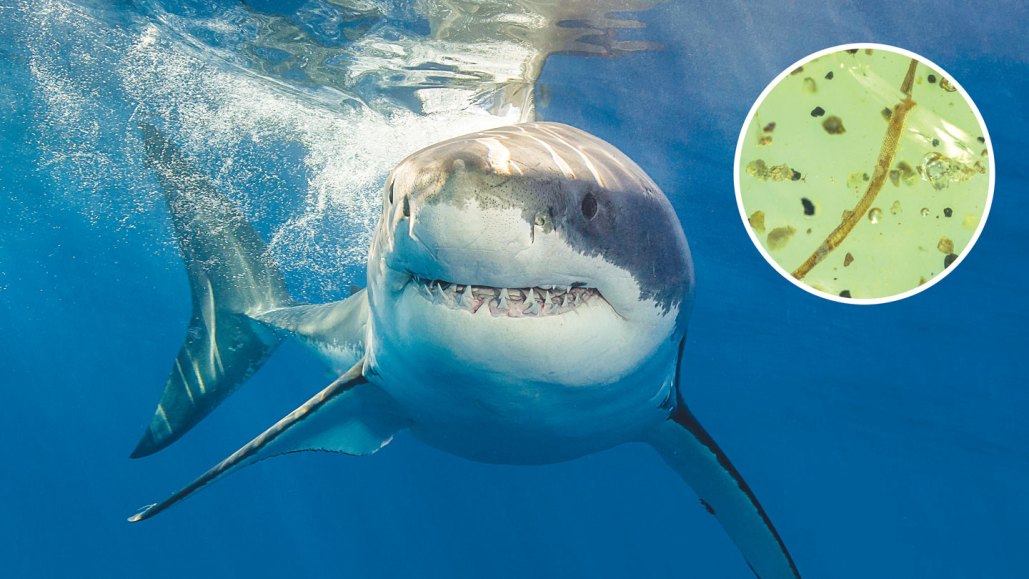How did a prehistoric shark parasite become preserved in amber?

A novel parasitic worm fossil dating back nearly 100 million years has puzzled paleontologists. It is believed that the worm used to live in fish bellies, leaving researchers perplexed as to how it ended up preserved in amber, a fossilized tree resin.
The worm was discovered in northern Myanmar. Palaeontologist Cihang Luo and his team have reported in a March 22 Geology paper that the worm exhibits features strikingly similar to contemporary tapeworms found in shark intestines.
Luo and his colleagues had been studying amber purchased from merchants in Myanmar. Initially, they found mostly insects and roundworms trapped within the amber. However, they then stumbled upon a fossil that looked rather peculiar. Luo, who is associated with the Nanjing Institute of Geology and Paleontology in China, described the 10-millimeter-long, threadlike specimen as being flatter than the average roundworm. On examination under a microscope, the team identified armour, tentacles and hooklets that were larger than, but bore resemblance to, the tentacles of current day flatworms that infest sharks and rays.
Scientists have previously discovered preserved flatworm eggs in 270-million-year-old fossilized shark feces. But due to the small size, soft bodies, and ephemeral life cycles of flatworms, locating body fossils is extremely uncommon, remarks Luo.
Raymond Rogers, a taphonomist associated with Macalester College based in St. Paul, Minnesota, describes the fossil as a remarkably well-preserved find and an enigma waiting to be solved.
Paleontologist Kenneth De Baets of the University of Warsaw in Poland finds the discovery hard to reason out, humorously stating that there aren't many sharks living in trees. “It’s like winning the lottery — one in a million,” he adds.
Based on speculations by Luo and his team, it seems that the scavenger consuming a beached shark may have picked up the parasite and somehow managed to throw it into a proximate tree.
De Beets says in order to confirm this preservation hypothesis, they would need “complete specimens or host remains."




